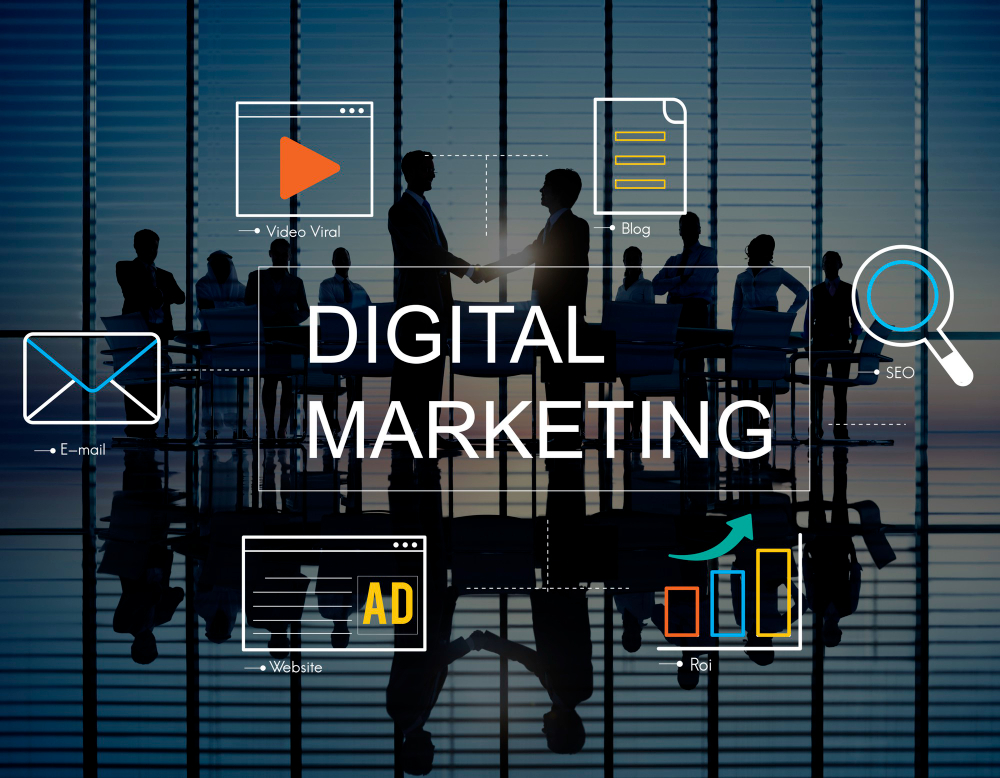
Lead generation is essential for any business aiming to achieve sustained growth. With the digital marketing landscape evolving at a rapid pace, businesses must leverage effective strategies to capture and convert potential leads. Here, we’ll break down the top 10 lead generation strategies that you simply can’t afford to ignore!
1. Content Marketing
High-quality, valuable content attracts potential leads by addressing their needs or answering their questions. Blogs, videos, infographics, and ebooks provide a way for potential customers to engage with your brand, establishing you as an industry expert. This trust-building tactic is highly effective in generating qualified leads.
- Pro Tip: Regularly update content to keep it relevant and integrate SEO keywords to improve visibility.
2. Social Media Marketing
Social media is a powerful lead generation tool that allows businesses to interact directly with potential customers. Platforms like LinkedIn, Facebook, Instagram, and Twitter offer advertising tools, audience targeting, and analytics to help maximize reach and capture leads.
- Pro Tip: Use engaging content and lead generation forms directly on social platforms to streamline data collection.
3. Email Marketing
One of the most cost-effective strategies, email marketing nurtures leads by delivering personalized content, promotions, and product updates. Segment your audience to ensure that each recipient gets content tailored to their needs.
- Pro Tip: Include a strong call-to-action (CTA) and ensure your emails are mobile-friendly.
4. Search Engine Optimization (SEO)
Optimizing your website for search engines increases its visibility, making it easier for potential leads to find you. Effective SEO involves keyword research, on-page optimization, link building, and regular content updates.
- Pro Tip: Prioritize long-tail keywords to attract more qualified leads who are likely further along in the buyer journey.
5. Pay-Per-Click (PPC) Advertising
PPC advertising allows businesses to reach audiences quickly. Targeted ads appear in search engine results, social media platforms, or on other websites. When someone clicks on your ad, they’re directed to a landing page designed for conversion.
- Pro Tip: Use A/B testing on your ads to determine which messaging resonates best with your target audience.
6. Landing Pages with Lead Forms
Landing pages optimized for lead capture are essential. They focus on a specific offer and guide users toward filling out a lead form. Ensure your landing page aligns with your ad’s promise and has a clear CTA.
- Pro Tip: Simplify your form and only request necessary information to encourage more sign-ups.
7. Referral Marketing
Encourage existing customers to refer new leads through referral programs. Offering incentives, such as discounts or special offers, motivates customers to recommend your business to their networks, bringing in warm leads with a high likelihood of conversion.
- Pro Tip: Create a simple referral process and regularly remind customers of the benefits of referring others.
8. Webinars and Live Events
Webinars and live events offer direct interaction with potential customers, allowing you to showcase your expertise while gathering lead information. These events help position your brand as a leader and build strong relationships with attendees.
- Pro Tip: Promote webinars through multiple channels and follow up with attendees afterward to maintain engagement.
9. Influencer Marketing

Partnering with influencers gives your brand access to their established audience, expanding your reach. Influencers’ endorsements can build trust quickly, encouraging leads to check out your offerings.
- Pro Tip: Choose influencers whose audience aligns with your target market for better lead quality.
10. Retargeting Campaigns
Retargeting ads remind people who have already visited your site about your offerings, encouraging them to return and convert. This strategy is especially effective for people who showed interest but didn’t complete the desired action.
- Pro Tip: Customize retargeting ads based on specific actions users took, such as viewing a product or adding items to their cart.
Creating a Lead Generation Plan for Success
Implementing these lead generation strategies requires thoughtful planning and regular assessment. Here are some steps to help ensure your efforts are as effective as possible:
- Define Your Target Audience
A well-defined target audience ensures your lead generation strategies are directed at the right people. Research your ideal customer’s demographics, preferences, and pain points to guide your campaigns. - Set Clear Goals
Determine what you want to achieve, such as increasing email subscribers, booking more demos, or boosting webinar attendance. Clear goals help you measure success and optimize your strategies over time. - Track and Analyze Data
Use tools like Google Analytics, social media insights, and CRM software to monitor the performance of each strategy. Tracking metrics such as click-through rates, conversion rates, and cost per lead will help you understand which tactics are working and which need adjustment. - Nurture Your Leads
Generating leads is only the beginning; nurturing those leads is key to turning them into customers. Use personalized email sequences, follow-ups, and retargeting campaigns to build relationships with your leads and guide them through the sales funnel. - Test and Optimize Regularly
Continuous improvement is essential in lead generation. Conduct A/B tests on your content, landing pages, and CTAs to find what resonates best with your audience. Regular optimization ensures your efforts remain effective as trends and customer preferences evolve.
Combining Strategies for Maximum Impact
Combining several of these strategies can significantly boost your results. For instance, promoting a content-rich webinar via social media and email marketing can generate immediate interest while positioning your brand as a trusted resource. After the webinar, follow up with attendees and use retargeting ads to capture those who didn’t register initially.
Final Thoughts
Lead generation is an ongoing effort that involves a mix of tried-and-true tactics and innovative approaches. By leveraging these top 10 lead generation strategies and continuously refining your approach, you can create a pipeline of qualified leads that will fuel your business growth. Remember, successful lead generation isn’t about pushing for the sale immediately; it’s about building connections, providing value, and guiding potential customers toward your offerings naturally.
These strategies will not only help attract the right audience but also foster loyalty and long-term engagement, paving the way for sustainable growth. So, take these insights, tailor them to fit your business, and start building a robust lead generation plan that drives results!
Implementing Lead Generation Tools
The right tools can streamline your lead generation efforts and make your strategies more effective. Here are a few types of tools to consider:
- CRM Software: Tools like HubSpot, Salesforce, and Zoho CRM allow you to manage and track interactions with leads, providing insights into customer behavior and preferences. This data is invaluable for personalizing communications and nurturing relationships.
- Email Marketing Platforms: Platforms like Mailchimp, Constant Contact, and ConvertKit make it easy to segment lists, automate email sequences, and analyze email engagement.
- Analytics and Tracking Tools: Google Analytics, Hotjar, and SEMrush can help track performance metrics, such as traffic sources, bounce rates, and time spent on site. These insights can guide adjustments to improve lead capture and conversion rates.
- Social Media Management Tools: Tools like Hootsuite, Buffer, and Sprout Social help schedule posts, monitor engagement, and track metrics across social platforms, making it easier to manage social media marketing as part of your lead generation strategy.
- Landing Page Builders: Platforms like Leadpages, Unbounce, and Instapage offer customizable landing page templates and A/B testing features to optimize pages for higher conversions.
By integrating these tools, you can automate many parts of your lead generation process, save time, and enhance accuracy in targeting and engagement.
Measuring Success: Key Performance Indicators (KPIs)
Tracking your lead generation success is essential for understanding what works and identifying areas for improvement. Here are some key metrics to monitor:
- Conversion Rate: The percentage of visitors who complete a desired action, such as filling out a form or subscribing to a newsletter, is a crucial metric for evaluating the effectiveness of your landing pages and CTAs.
- Cost Per Lead (CPL): Knowing how much you’re spending to generate each lead helps you assess the ROI of your campaigns and adjust your budget allocation.
- Lead Quality: Not all leads are equal, so measure the quality of leads by tracking how many convert into paying customers. Use a lead scoring system to prioritize high-quality leads.
- Traffic Sources: Tracking where your leads come from (e.g., social media, organic search, paid ads) can reveal which channels are most effective and where to focus your efforts.
- Engagement Metrics: Email open rates, click-through rates, and social media engagement indicate how well your content resonates with your audience. High engagement often translates into higher lead conversion rates.
Adapting to Evolving Trends
The world of digital marketing is constantly changing, so it’s essential to stay informed about new tools, platforms, and tactics that can enhance your lead generation efforts. As AI and machine learning technologies advance, for example, they offer exciting opportunities for predictive lead scoring, personalized email recommendations, and more accurate data analysis.
Moreover, customers increasingly value authenticity and personalized experiences. In light of this, it’s vital to create genuine, value-driven content and leverage personalization in your communications. A customer-first approach can significantly boost your lead generation effectiveness.
Wrapping Up
Mastering lead generation is a powerful way to accelerate business growth, build a loyal customer base, and stay competitive. By implementing these top 10 lead generation strategies, you’ll not only reach more potential customers but also create lasting relationships that lead to repeat business and referrals.
Stay committed to testing, optimizing, and learning from your data to improve continuously. As your business evolves, so should your lead generation strategies—keeping them fresh, relevant, and aligned with your growth goals. With the right blend of tactics, tools, and metrics, you’ll be well on your way to achieving sustainable success in today’s dynamic market.
Conclusion
These top 10 lead generation strategies can provide a significant boost to your marketing efforts and drive long-term business growth. By integrating a mix of these tactics, you can reach, capture, and nurture leads more effectively, ultimately turning potential customers into loyal ones.
Each strategy brings its unique advantage, and implementing them in a coordinated manner will help keep your business at the forefront of your industry.
So dive in, and watch your lead generation efforts transform your business!







